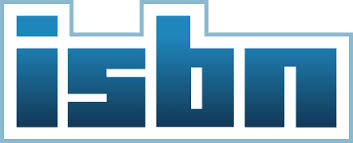Manuscript Preparation Guidelines
1. Language
The language of the manuscript must be English (either American or British standard, but not the mixture of both).
2. Length of paper
The length of the paper should not exceed 30 pages (Times New Roman, 12 Font) excluding tables, figures, references and appendices (if any). Paper containing more than 30 pages will be returned to the author(s) to abridge. Articles should be typed in double-space (including footnotes and references) on one side of the paper only (preferably A4) with wide margins. Authors are urged to write as concisely as possible, but not at the expense of clarity.
3. Title Page
The title page should include:
(i)The name(s) of the author(s) (ii) A concise and informative title (iii)The affiliation(s) and address (es) of the author(s) (iv)The e-mail address, telephone and fax numbers of the corresponding author
4. Abstract
Please provide an abstract of 150 to 300 words. The abstract should not contain any undefined abbreviations or unspecified references.
5. Keywords
Provide 4 to 6 keywords which can be used for indexing purposes.
6. Acknowledgement
The author may use acknowledgement section in the title page of the paper (if any).
7. Subdivision of the article
Divide your article into clearly defined and numbered sections. Subsections should be numbered 1, 2. (then 1.1, 1.1.1, 1.1.2), 1.2, etc. The abstract is not included in section numbering.
8. Table and Figures
Present tables and figures within the article, not at the end of the article. Please note that the article will be published in black and white (print), although online version will contain the colorful figures (if any). However, the color print will be available in extreme cases as per the request of the author.
9. References
Author(s) should follow the 6th edition of APA style in referencing. Please visit www.apastyle.org to learn more about APA style
10. Citations in the text
Please ensure that every reference cited in the text is also present in the reference list (and vice versa). Avoid citation in the abstract. Unpublished results and personal communications should not be in the reference list, but may be mentioned in the text. Citation of a reference as ‘in press’ implies that the item has been accepted for publication.
11. Reference List
References should be arranged first alphabetically and then further sorted chronologically if necessary.
Examples:
Reference to a journal publication:
Van der Geer, J., Hanraads, J. A. J., & Lupton R. A. (2000). The art of writing a scientific article. Journal of Scientific Communications, 163, 51-59.
Reference to a book:
Strunk, W., Jr., & White, E. B. (1979). The elements of style. (3rd ed.). New York: Macmillan, (Chapter 4).
Reference to a chapter in an edited book:
Mettam, G. R., & Adams, L. B. (1994). How to prepare an electronic version of your article. In B. S. Jones, & R. Z. Smith (Eds.), Introduction to the electronic age (pp. 281-304). New York: E-Publishing Inc.
Reference to a web source:
Smith, Joe, (1999), One of Volvo’s core values. [Online] Available: http://www.volvo.com/environment/index.htm (July 7, 1999)






